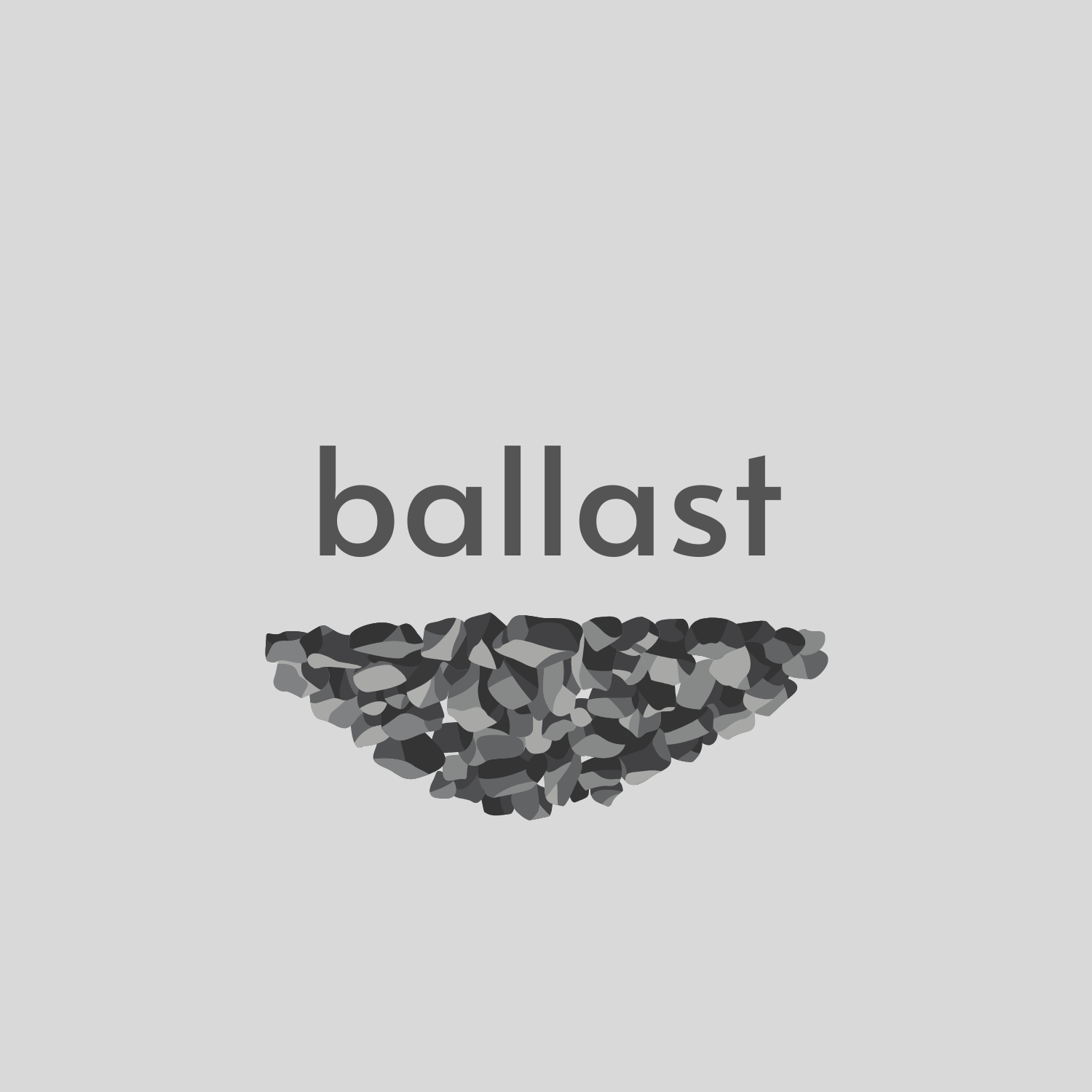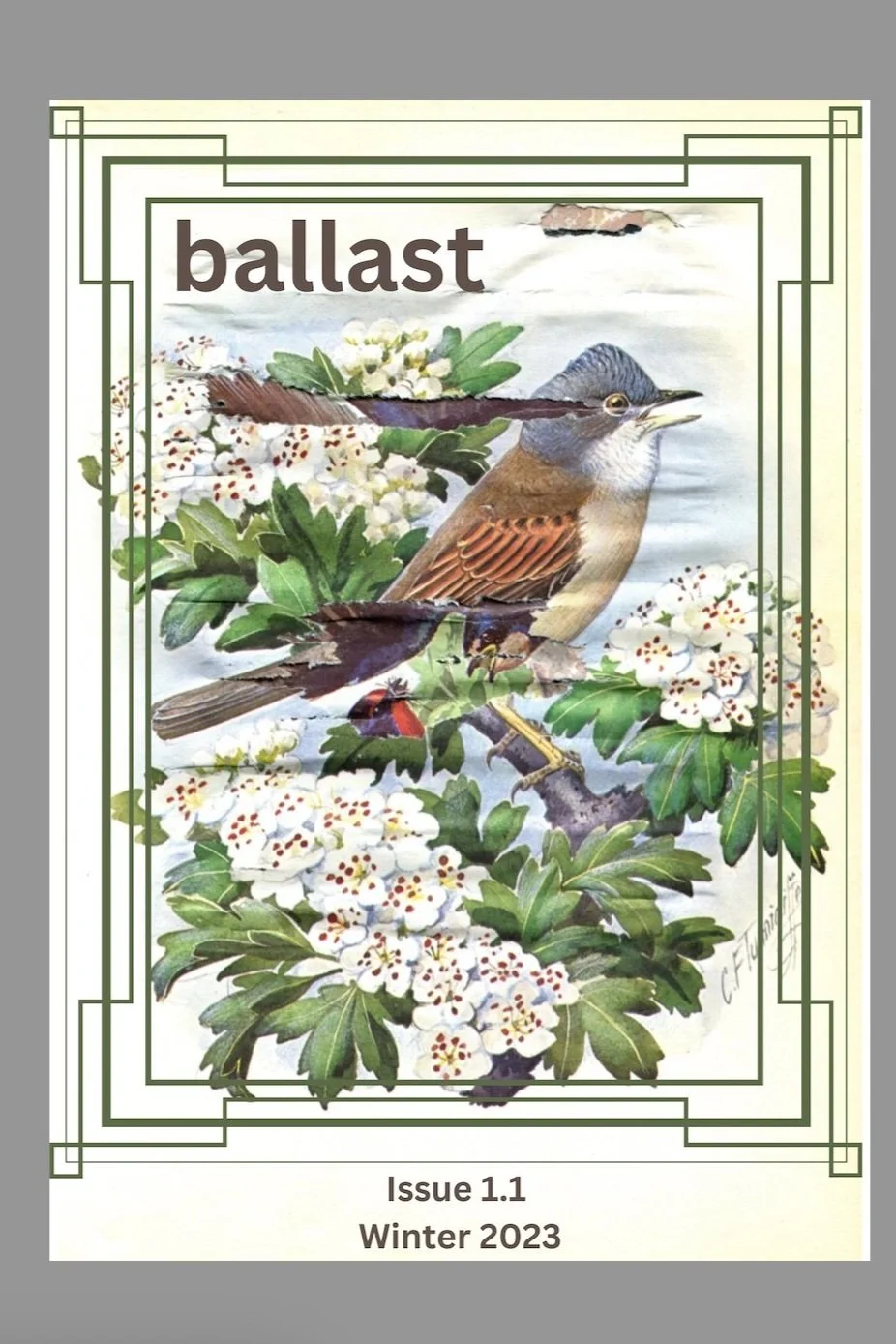Editorial Introduction
ballast 1.1
It’s not for nothing that we launch ballast in the midst of high global inflation and in the wake of the FTX crypto collapse. The rise and fall of perceived “value”—the imagined social contract of it all and the actual consequences on real lives, unintended victims, livelihoods, wellbeing—is ripe for a Dickensian treatment of sorts. At the same time, this shaking and quaking around such buzzwords as “value” (not to mention “regulations,” “commodities,” and, richest of all, “securities”) loosens the sediment around such a maddeningly speculative enterprise as “poetry.”
As (alarmingly?) often the language around poetry turns to economic metaphor, we intend for this editorial introduction to ballast’s first issue to use these recent financial headlines as fodder for an aesthetic speculation and not as a quasi-think piece on the market as such. The spate of economic downturns and pitfalls, in other words, is merely a jumping off point for ecstatic, excessive, outlandish provocations (aren’t they always?). For whatever it’s worth, the flight of fancy required for both “exchanges” to take place is a notion that certainly precedes this writing.
What’s particularly notable at present is the competing framework of “risk-reward.” Running parallel to the now-trite critique of the “time is money” metaphorical web, the “risk-reward” feels somehow more entrenched and less questioned than the more familiar adage. Any episode of Shark Tank or any of its national cousins will regularly feature the investors quipping that such-and-such a business is “not worth [their] time” or, more to the point, that the equity shares they take need to be commensurate with the “risk” of the venture. The deregulated, Randian, laissez-faire fervor around cryptocurrencies big and small fed off the belief in risk while mitigating said risk with the introduction of such “assets” as (not-so) “stablecoins” and what have you. And, in the end, the utopic impulse yet scammy execution of crypto serves, perhaps, as a cautionary tale or, better yet, as some photonegative, some wish fulfillment gone sour, for a community in the arts where the base of “value” lies in something we can recognize but recognize in passing—see also: loosely, tentatively, as it slips between our fingers.
But is such a framework (enticing, potent, collapsible and transferable) for all this, the case for poetry? Ballast thinks it unlikely in a wholesale environment, though there may be a curious overlap, a kind of brain bleed. Poetry, as with all art, often assumes that risk is rewarded, yet the tension builds that risk cannot be too risky (unless you tap into the established “market” for it, alas). As writers ourselves, we’re aware of the appeals to “audience” and “readership” and “newness” and “disrupters” that swirl about in the Gordian Knot we know as publishing. And on its untethered ends lies the snapback of a rubber band, and, not too far removed, the bite mark, the welt, it leaves behind.
When we first began kicking around the idea of what would become ballast in the fall of 2022, we had no set agenda for doing so. We didn’t feel led to fill a niche or plug a leak in the dike; we simply wanted to add more. To infuse the market. To inflate. We eschew any sense of an impending “market correction.” Our name reflects some of that invitation of welcoming excess—in language(s), in scale, in daring; as yet another independent online literary journal, we adore the sense of “filler.” In fact, we lean into that questionable phrase “yet another.” We fill, infuse, inflate, adding more more more. Ballast, we hope, like its namesake, takes on the excess and filler in order to level off, ground us, become buoyant in the best and most poetical way which is, as is often the case, the best and most paradoxical way.
Drawing to a close now: A. R. Ammons’s Garbage (1993) is something of a codifying text at ballast for its kinship towards “refuse” as comely, significant, devotional. There’s a judgment—aesthetic, spiritual, something else—that occurs in that text, a procession that heads toward convergence and divergence at the same time (paradox!):
down, down on the lowest appropinquations, the
laborsome, loaded vessels whine like sails in
too much wind up the long ledges, the whines
a harmony, singing away the end of the world
or spelling it in, a monstrous surrounding of
gathering—the putrid, the castoff, the used,
the mucked up—all arriving for final assessment,
for the toting up in tonnage, the separations
of wet and dry, returnable and gone for good
(Ammons, Garbage, 4.43-51)
In like spirit, we sing in praise of “filler” not as unnecessary, not as trash, but as endlessly necessary for the very shaping formfulness that it offers. Filler doesn’t flood. It fills. We return the purchasing power, if you will, to the masses.
The poems and writers we proudly present in this, our inaugural issue, come to us as an assortment of dinner party guests claiming a seat at our humble but inviting table. A major source of fun in these early months of ballast has been our evening editorial meetings during which we imagined submissions in conversation with one another, commenting on each other, piggybacking off others, and challenging even more. These words come to us—and from us to you—from around the globe, across generations, among perhaps quite disparate sensibilities. These words may never have flitted around one another in ordinary circumstances, and yet here they are, speaking their piece and, above/underneath it all, adding more.
Thank you for reading.
— Jacob Schepers, for ballast
ballast is Jacob Schepers and Sara Judy, editors
Special thank you to contributor Daniel Lehan for providing the centerpiece of Issue 1.1’s cover, “Bird Image.”

